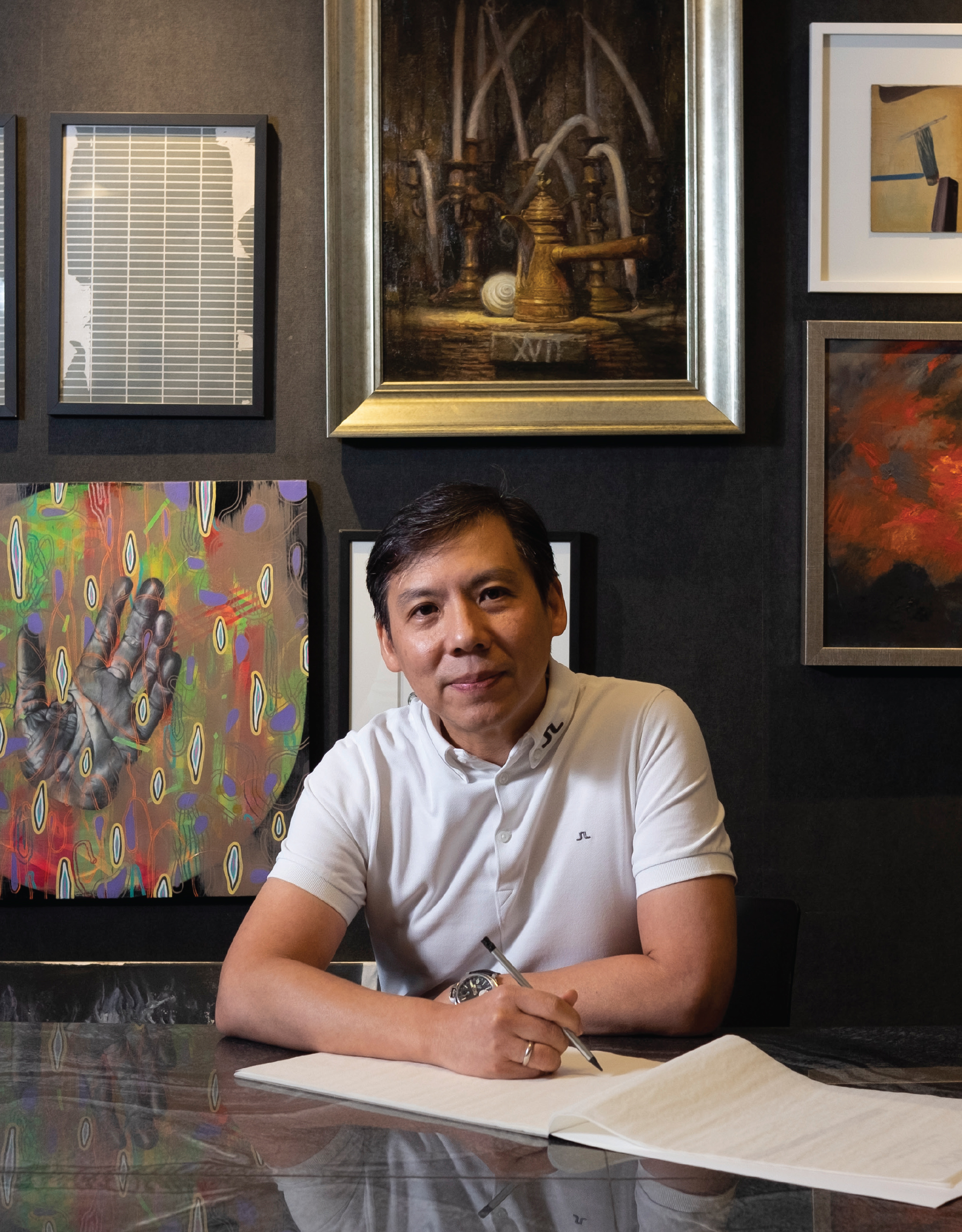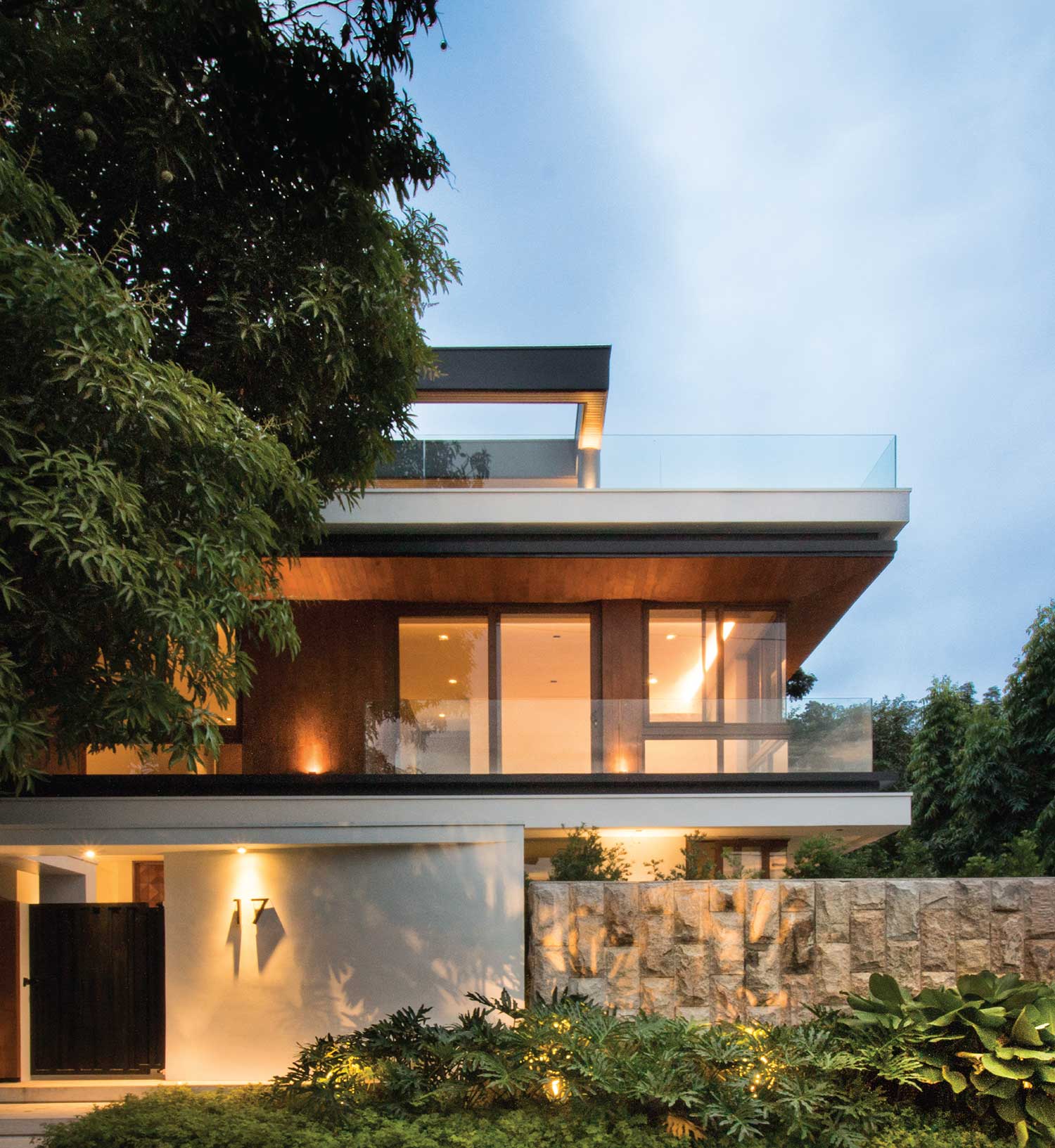Architect Anthony Nazareno grew up a bit different than most.
His home was a house of creativity, where designers, fashion designers, and architects hung out and his dad surrounded him with the great masters of his craft. It’s a good thing that spark stayed throughout his life because his fascination with minimalism started way earlier than you would think. As a kid, he lived in a building designed by Architect Bobby Manosa. It was a brutalist, seven-story building that he lived in from ages two to six years old. Even after moving to a bungalow in Makati, Arch. Nazareno and his father would keep coming back to United Nations Avenue. “I still remember the intricacies of understanding that,” says Arch. Nazareno. “I started to think three-dimensionally from that point on. This is possible and it’s different, you can’t see this anywhere.”
The strict brutalist exterior was a catalyst in his eyes, which eventually led to his love for minimalism. The idea of keeping things raw and simple and using that bareness as a vital element of design was the key principle of his philosophy: learning to create more from less. His father had eventually taken notice of his interest in architecture and was the driving force behind his passion. His father brought him to work, nudged him in the right direction, and encouraged him to continue his career. He would ask some of his friends like Arch. Manosa and Arch. Jorge Y. Ramos to give his son a tour of their houses and would take him to view the GSIS Building in Pasay.
Arch. Nazareno encourages young architects to travel so they can widen their perspectives. He recalls, “My dad brought me to work in Paris and we went to an exhibit of Kenzo Tange, one of the rare brutalist architects of Japan, and that was where I fell in love with concrete.”
It eventually led to an education at the California College of the Arts under the mentorship of minimalist architect Jim Jennings. There, he would learn to hold back and understand the importance of material. “Minimalism is also in the material. If it didn’t need to be painted, why paint it?” He recalled pulling up to a house with gravel on the driveway, “It was auditory, [it] wasn’t just visual. Jim didn’t comment on the bad driving because he said, “Didn’t you feel welcome when you heard the crackling?” To him it was that kind of minimal. He said, “Don’t you feel like you’ve arrived?” So, the sense of entry, the beauty of minimalism, was down to that.”
Arch. Nazareno continues to cite his other inspirations, like the historical Barcelona Pavilion by Ludwig Mies van der Rohe that provided him a breakthrough (he recalls saying “Oh my gosh, what is this? It’s amazing!”) and the work of Fernando Zóbel de Ayala, whose simple brush strokes intoxicated him. He explains, “It’s an exercise in restraint really. When you start feeling the need to make your architecture [iconic], there’s a tendency to overdo stuff and that’s so not me; I try to really edit it.” He finds joy in seeing the bare necessities and sees the essence of minimalism with clear eyes. To Arch. Nazareno, honesty is seen in one’s work, and there’s no use in waiting to get to the point. “It speaks better when it’s architecture that is just trained and tastefully restrained. It speaks a lot more than something that tries to be more than what it is.”

